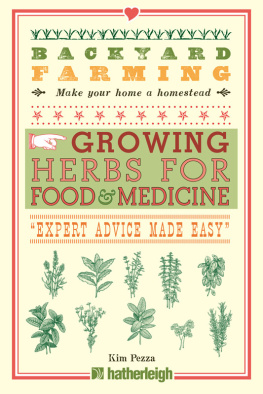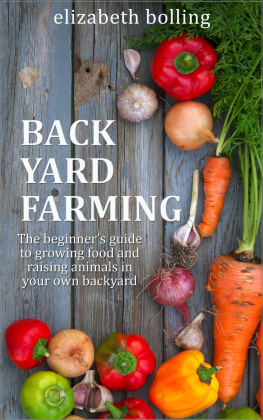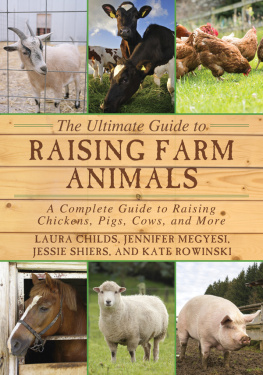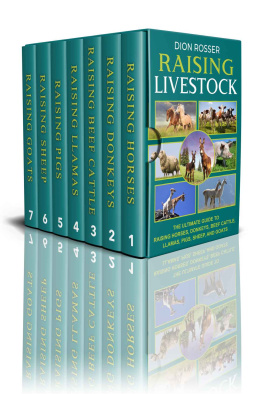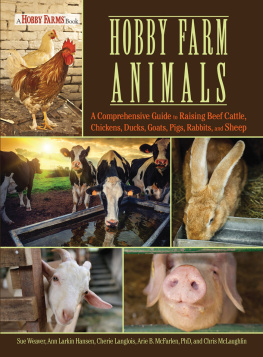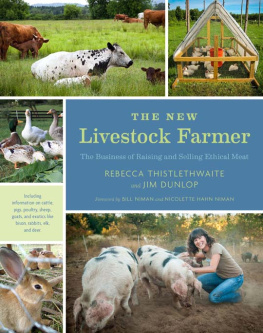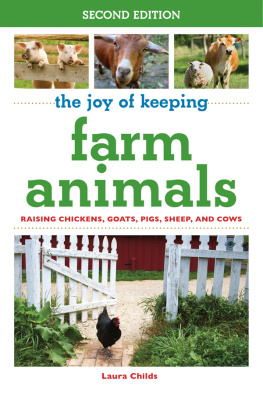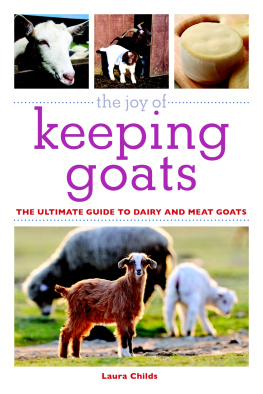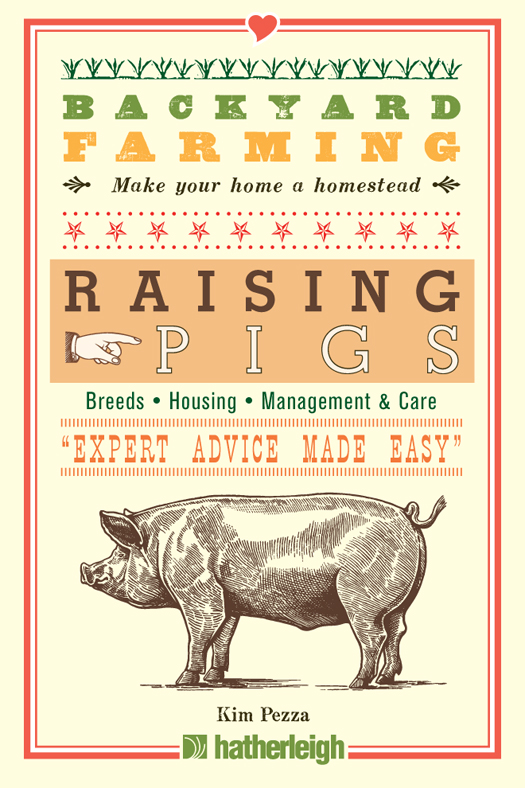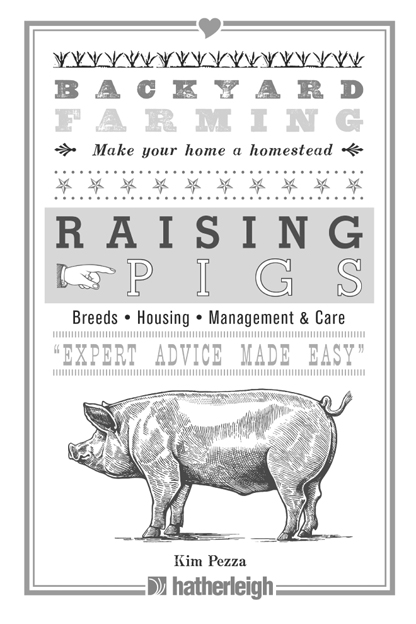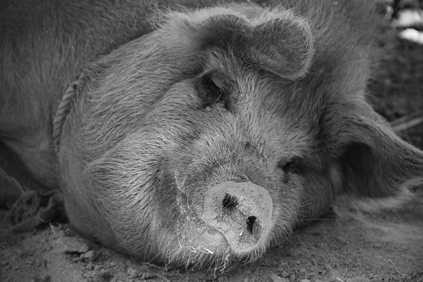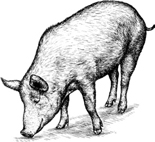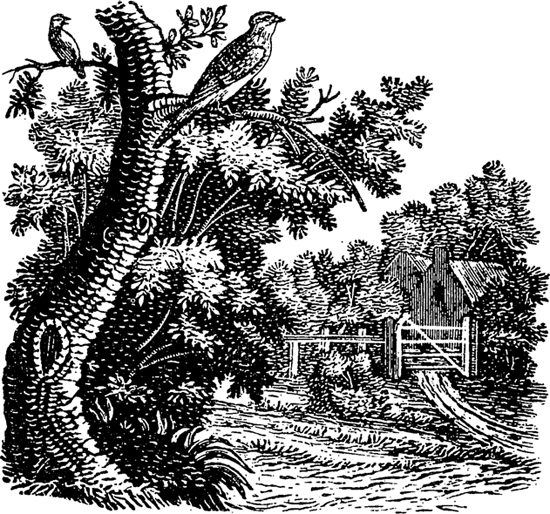Hatherleigh Press is committed to preserving and protecting the natural resources of the earth. Environmentally responsible and sustainable practices are embraced within the companys mission statement.
Visit us at www.hatherleighpress.com and register online for free offers, discounts, special events, and more.
Backyard Farming: Raising Pigs
Text copyright 2016 Hatherleigh Press
Library of Congress Cataloging-in-Publication Data is available upon request.
ISBN: 978-1-57826-621-0
eBook ISBN: 978-1-57826-622-7
All rights reserved. No part of this book may be reproduced, stored in a retrieval system, or transmitted, in any form or by any means, electronic or otherwise, without written permission from the publisher.
Cover Design and Interior Design by Carolyn Kasper
v3.1
CONTENTS
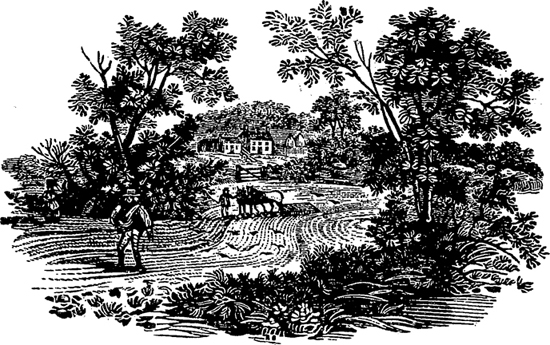
INTRODUCTION
P robably one of the most loved yet most misunderstood animals on the farm is the pig. Most people like piglets well enough, who are indeed known for their cuteness; however, most think of the adult pig as a dirty animal. If youve picked up this book, odds are youre thinking about adding some pigs to your own homestead or backyard farm. What this means is you are about to discover that this piggy preconception could not be further from the truth.
The pig is easily one of the smartest animals youll find on the farm, if not the smartest. They can also be the sweetest animal on the farmor, one of the most dangerous animal (but well cover that later).
Ask most pig owners who let their pigs actually be pigsmeaning they dont keep their animals in containment for their entire lives. Pigs, left to their own devices, will not only develop strong personalities, but can even outsmart their owners. They also make surprisingly great petsthough for those who have kept pigs, myself included, this fact hardly comes as a surprise. Having bred and raised crossbreed farm pigs for many years, as well as having kept a potbellied pig as a house pet and camping buddy for almost 13 years, I can confidently attest that pigs are by far one of the most intelligent animals that I have owned, and though they can be quite frustrating at times (especially if they get out), they are also ridiculously easy to fall in love with.
Pigs can be a fun, occasionally challenging animal to raise. And once you have raised a few, you can bet youll want to keep on raising them, year to year. Be warned, however: for a real hands-on owner, someone who is only raising one or two pigs for meat, pigs are also a very easy animal to become attached to, and make a pet out ofespecially if you have purchased it very young. If small-scale, year-to-year raising of one or two animals for meat is your plan, make sure to keep the end result in mind. Otherwise, youll likely find slaughter time very difficult, emotionally speaking. While you always want to treat your pigs well, at slaughter time you dont want to feel like you are sending the family pet off to the freezer, either! Finding the balance and keeping perspective is one of the most important keys to becoming a successful pig farmer.
So, grab a seat in your comfiest chair, keep your favorite beverage close at hand, and lets learn some of the beginners basics for raising pigs!
CHAPTER 1
A BRIEF HISTORY OF PIG FARMING
P igs, including the domestic pig and the Eurasian wild boar, are from the genus Sus, the family of Suidae and sub-family Suinae. They are considered even-toed ungulates, meaning an animal with an even number of toes (usually two or four, in this case two). And, although even-toed ungulates are usually herbivores (plant eaters), both the domestic pig and the wild boar are omnivores, meaning they eat both plants and meat. Highly intelligent, pigs can be found in art and literature, as well as in religious symbolism. In Europe, the boar has been known to represent a standard charge (an emblem emblazoned on a shield) in heraldry. And perhaps the most well-known symbol the pig represents is its place as the twelfth animal in the Chinese zodiac.
Under the Sus genus Suidae is the domestic pig and common Eurasian wild boar. Some will lump the wild boar (non-Eurasian), warthog, peccary and babirusa into the genus, though this is incorrect.
Sus is thought to include 10 living species, along with a number of extinct species. The living species include:
Palawan Bearded Pig
Bornean Bearded pig
Heudes pig
Visayan Warty (critically endangered)
Celebes (or Sulawesi) Warty pig
Mindoro (or Olivers) Warty pig
Philippine Warty pig
Wild Boar
Domestic Pig
Javan Warty pig
The Origins of the Domesticated Pig
DNA evidence (taken from various teeth and jawbone samples) dating back approximately 40 million years tells us that the pigs native to the Eurasian and African continents originated in the Near East. Found to be very adaptable, the pig was a perfect subject for domestication.
However, the question of when and where the pig was domesticated depends on the source. Some claim that evidence of pig husbandry goes back to 5,000 bce, with evidence of domestication in China going back to approximately 6,000 bce. Others say that the pig was domesticated from the wild boar in approximately 11,0009,000 bce (despite remains having been found in Cyprus that date back to 11,400 bce). Still others will argue that domestication occurred in approximately 13,00012,700 bce, at the Tiger Basin in the Near East. As of yet, there is no clear consensus; regardless, it is clear that the domesticated pig has been with us for quite some time.
Pigs with Near Eastern/Asian genes were introduced in Europe and quickly become popular due to their willingness to eat just about anything. Pigs also reproduced well, with multiple piglets per litter, and their meat was easy to preserve. With the availability of dependable, domesticated breeding stock, European farmers were also able to domesticate the European boar, which ironically led to pigs with the Near Eastern gene dying out. By the 1500s, Europeans had already begun breeding pigs for specific traits, related to the meat they produced, creating the foundation for what would later become the bacon-type and lard-type categories of pigs.
Soon, pigs began making their way across the sea, to the New World. At first, there were only a handful of animals: eight accompanied Christopher Columbus on his famous voyage; Hernn Corts and Sir Walter Raleigh brought a sizeable number of hogs with them to North and South America; another 13 followed Hernando de Soto to Florida. Within three years, de Sotos small group of swine had swelled to approximately 700 pigsa testament to the pigs ability to breed prolifically. (This number doesnt even count those animals that were eaten, those who escaped and became feral, or those animals that were given to the area Native Americans!)



